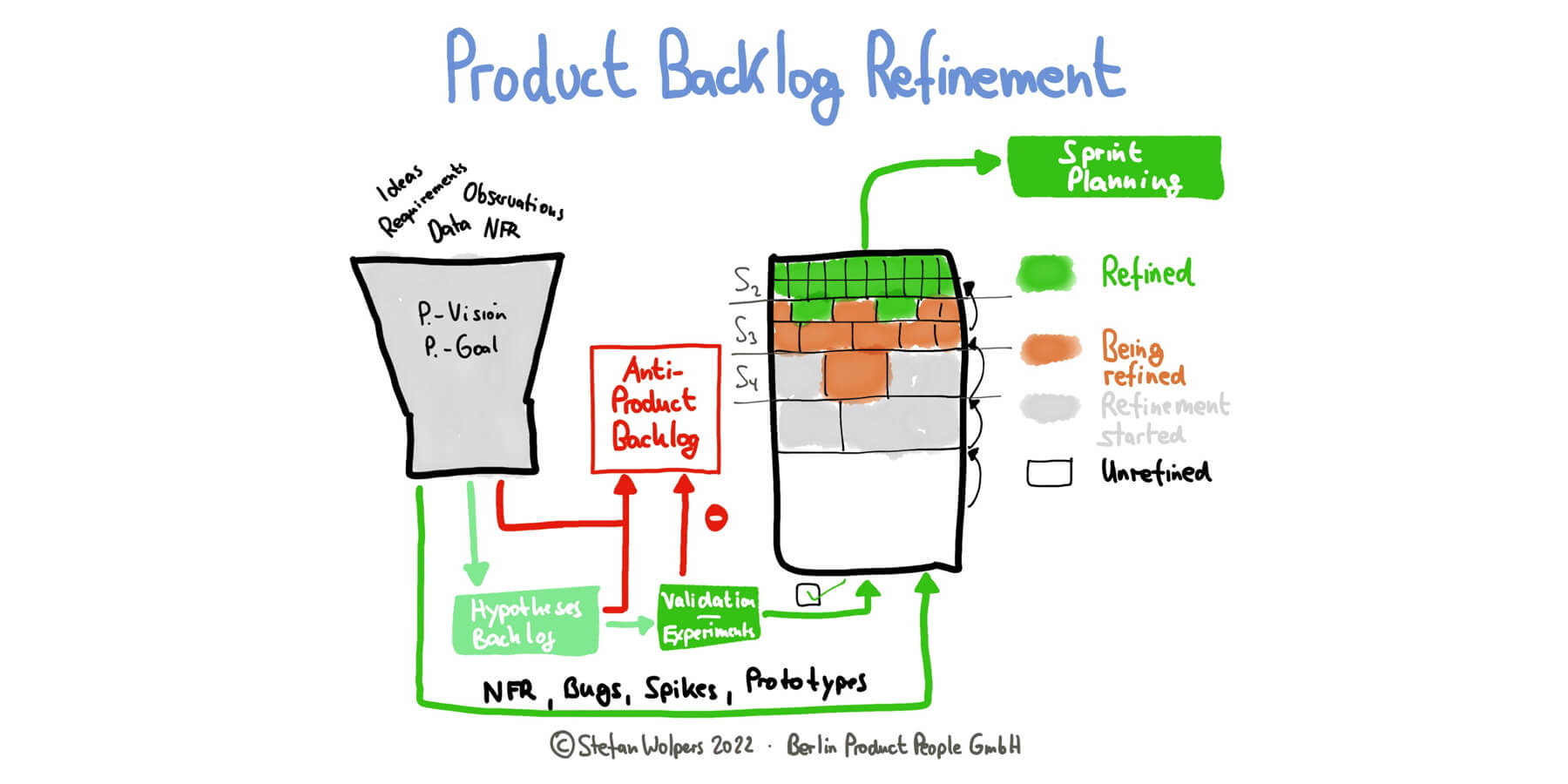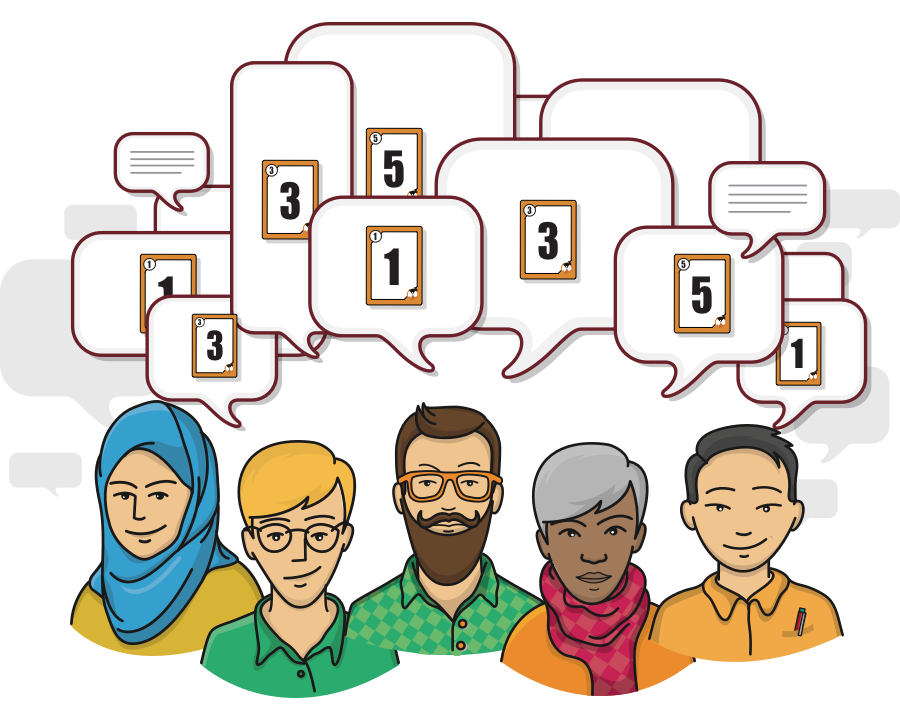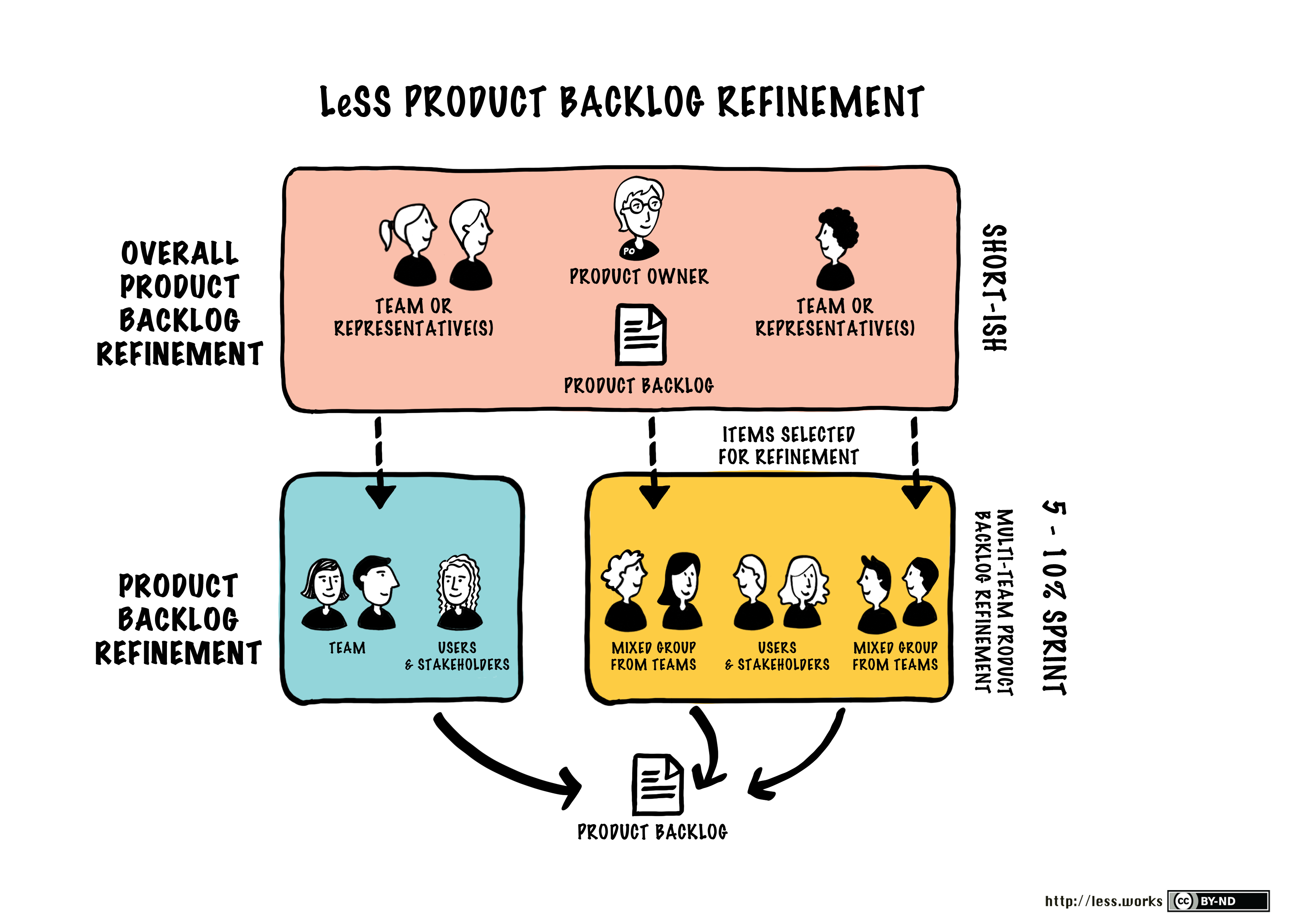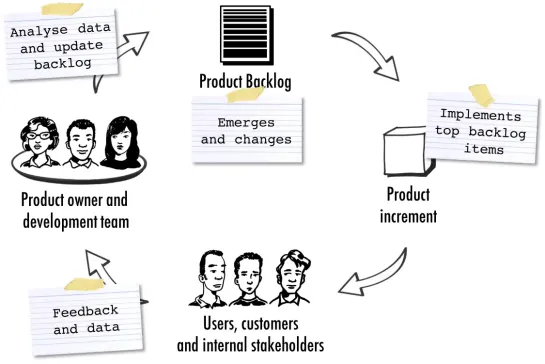
Effective Backlog Refinement for Product Owners
Backlog refinement is a fundamental activity for any Product Owner. While not an official scrum event, the scrum guide recommends spending up to 10% of the team's time on backlog refinement. The reason for this is simple: backlog refinement sets your sprints up for success by building a shared understanding of the work across the team.
This post discusses the best practices of Backlog Refinement for a Product Owner. Following the foundational techniques at different stages of your learning journey, you can learn about the best strategies to bring back to the team. To identify where you stand and find tailored strategies for improvement, consider taking our Product Owner Assessment at Lean Agile Intelligence.
The Deliverables of a Backlog Refinement
There are a few key objectives and deliverables to consider when it comes to Backlog Refinement:
-
A whole team understanding of what is needed to build and why. This includes new ideas and enhancements for customers as well as improvements to the application/system itself.
-
Backlog items created and refined by the Product Owner and team that meet the definition of ready or action items to get them closer to the definition of ready.
-
Estimates for the work that will potentially be included in upcoming sprints. A good starting practice is planning poker. Some teams eventually move to probabilistic forecasting. A good way to transition is to use a modified version of planning poker using only three cards: (1, Too Large, No Clue.) In this technique, the team continuously refines the item until it’s as small as possible while retaining value, not worrying about minor differences in size. We can then transition to using probabilistic forecasting. You can read more about that in-depth here.

Source - What is Planning Poker?
Designing a Backlog Refinement for Success
Creating a sales pitch that team members will read and want to attend is a good practice. It’s then up to the facilitator to design and execute a meeting in such a way as to live up to the hype! Here is a sample sales pitch you could include in your meeting invite.
-
Backlog refinement attendees will be able to influence what they are building and gain an in-depth understanding of the work and its purpose to set up successful and hopefully painless sprints!
Potential Roles and Responsibilities for your Backlog Refinement:
-
Team members are responsible for understanding the stories BEFORE coming into refinement.
-
To achieve the above statement, the Product Owner is responsible for having prioritized stories to refine and providing time for the team to investigate. It’s a good idea to send out a list of the stories for refinement a few business days ahead and ensure everyone bakes in slack time during sprint planning for this work.
-
The Scrum Master is responsible for facilitation and the overall effectiveness of the meeting as well as teaching the dev team how to make the meeting effective through facilitation techniques.

Source - Product Backlog Refinement
Backlog Refinement and The Learning Journey
At Lean Agile Intelligence, we recognize Backlog Refinement as the team's ability to progressively elaborate backlog items and create a shared understanding of the work. We divided the learning journey into 4 stages: Developing, Emerging, Adapting, and Optimizing. The following sections will discuss each stage in detail and provide practical tips and techniques to help you extend your skills in this area.

Source - Refining The Product Backlog
Developing
Product Owners who are “developing” an understanding of the value of Backlog Refinement and adopting the foundational techniques should focus on the following improvements
- The What: Ensures Backlog Refinement occurs on cadence.
- The How: It’s essential to treat refinement as seriously as other meetings and should be conducted on a scheduled cadence. A recommended start point is every week for 1 hour. Being on a cadence means the meeting is happening simultaneously each interval. This way, team members and external attendees can adequately plan and consistently attend.
- The What: Ensures the right people to elaborate and decompose backlog items (i.e., User Stories)
- The How: Not only should team members attend, but others outside the team who can help the team refine backlog items should be in attendance. Some potential examples are architects, Business Stakeholders, Shared services, SME’s, or anyone who can add value to the conversation.
- The What: Facilitates rich conversation, backlog items (i.e., User Stories writing, decomposition, team-based estimation (i.e., planning poker), design discussion, and progressive elaboration on acceptance criteria.
- The How: A product owner facilitating rich conversation and the various stages of backlog refinement plays a crucial role in Agile product development. Here's how a product owner would achieve this:
-
-
-
Engage Early and Often: Initiate and maintain an ongoing dialogue with stakeholders, users, and the development team to deeply understand the needs and goals. This continuous feedback loop aids in refining and prioritizing backlog items.
-
Create a Safe Environment: Ensure the team feels comfortable sharing ideas, asking questions, and raising concerns. A psychologically safe environment encourages open dialogue, better ideas, and more accurate estimations.
-
Focus on Value: When writing user stories, ensure they're framed regarding user value. This helps the team understand the purpose behind each item, fostering a deeper connection to the work.
-
Decompose Epics: Break down larger features (epics) into smaller, more digestible user stories. This decomposition helps the team better understand the work and ensures the tasks are achievable within a sprint.
-
Use Visual Aids: Utilize tools like story maps, flow diagrams, and mockups during discussions. These visual aids can help convey complex ideas clearly and foster a shared understanding.
-
Promote Team-Based Estimation: Use techniques like planning poker to involve the entire team in the estimation process. This collaborative approach allows for a broader range of perspectives, leading to more accurate estimates.
-
Foster Design Discussions: Encourage the team to discuss potential technical solutions, challenges, and alternative approaches. These discussions help in identifying potential roadblocks early and promote creativity in problem-solving. Iteratively
-
Refine Acceptance Criteria: Begin with a high-level acceptance criterion and iteratively refine it as the team discusses and understands the story better. Engaging the team in refining acceptance criteria ensures they are clear, testable, and understood by all.
-
Facilitate Regular Backlog Refinement Sessions: While having a dedicated refinement session is beneficial, promoting an environment where the team feels they can discuss, clarify, and refine stories at any point fosters a culture of continuous improvement.
-
Seek Feedback: Post refinement sessions, ask for feedback from the team on what went well and what can be improved. This feedback loop helps in continuously improving the process.
-
-

Emerging
Product Owners that are “emerging” beyond the foundational techniques of Backlog Refinement and are embracing it as they become more proficient should focus on the following improvements.
-
The What: Sends out a list of backlog items (i.e., User Stories) that will be reviewed in the Refinement session so that team members can prepare
-
The How: As stated earlier, Product Owners should send out a list of items to be refined at least three business days before your meeting. This is a good practice for setting up productive and effective refinement sessions. Designing a refinement meeting including the items stated in “The What” above will help drive effectiveness. Don’t be afraid to change techniques and processes to improve the desired outcomes.
-
-
The What: Pre-refines the backlog items (i.e., User Stories) that are targeted for the Refinement session, so they are clear and necessary artifacts are present
-
The How: Product owners should prepare product backlog items for conversation. One way to do this is to identify the value of each backlog item and relate it to larger team and product goals. In 2001: the Card, Conversation, Confirmation model is proposed by Ron Jeffries to distinguish “social” user stories from “documentary” requirements practices such as use cases. To prepare for the conversation, you need to prepare the "card".
-
-
The What: Ensures backlog item ( (i.e., User Story) Definition of Ready is established, and Backlog Refinement is geared towards meeting that criteria.
-
The How: As a team, discuss what is needed to begin working effectively on backlog items and document agreed-upon standards to work toward during refinement. A good starting point is Bill Wakes “INVEST” which stands for Independent, Negotiable, Valuable, Estimable, Small, and Testable. His original post on the topic can be found here.
-
* * * * * *
"Always start with the bigger picture."
* * * * * *
Adapting
Product Owners that are “adapting” the Backlog Refinement practice to extract the full benefit should focus on the following improvements.
-
The What: Participates in informal Backlog Refinement with the team in their collaborative space
-
The How: For a Product Wwner looking to encourage more informal, impromptu backlog refinement sessions in their team collaboration space, they can follow these steps:
-
Open Environment: First and foremost, foster an open environment where team members feel comfortable sharing ideas, questions, and feedback about backlog items at any time. This can be achieved by expressing verbally and repeatedly that all input is valuable and there's no need to wait for scheduled meetings to discuss items.
-
Physical and Virtual Collaboration Space: Set up a dedicated area in the team's physical workspace (if co-located) with whiteboards, post-it notes, and markers. Leverage digital tools like Trello, Miro, or Jira for remote or hybrid teams to create a virtual collaboration board that allows asynchronous communication.
-
'Parking Lot' Concept: Designate a space (physical or virtual) as the 'parking lot', where any team member can add an item or topic they feel needs refining. This allows for continuous input and prevents good ideas or pressing questions from getting lost.
-
Encourage Proactivity: Actively encourage team members to jot down any thoughts or questions while working on their tasks. Sometimes, the most pertinent questions or insights arise in the thick of the work.
-
Immediate Address: If a significant concern or idea arises, the product owner can immediately gather the necessary people for a brief discussion. This keeps the momentum going and addresses issues promptly.
-
Feedback Loop: Regularly solicit feedback from the team about the effectiveness of these impromptu sessions. Modify and adapt based on the feedback to ensure the process meets the team's needs.
-
Bridge to Formal Refinement: If, during an impromptu session, a topic becomes too vast or needs a more structured discussion, the product owner can make a note to include it in the next formal refinement meeting. This ensures that deeper or more complex issues get the attention they deserve.
-
-
-
The What: Ensures refinement of a backlog item (i.e., User Story) continues until it is sufficiently independent to be worked on by the team without excessive coordination
-
The How: Here's how a product owner might achieve this:
-
Embrace INVEST Criteria: The product owner should be well-acquainted with the INVEST criteria (Independent, Negotiable, Valuable, Estimable, Small, Testable). Notably, the 'Independent' criterion ensures that stories can be developed, tested, and delivered independently of others.
-
Decompose Larger Items: Break down more oversized backlog items or "epics" into smaller, more manageable user stories. This ensures that the team can take up each story without being entangled with others.
-
Limit Cross-Dependencies: The product owner should actively identify and minimize dependencies between backlog items while refining. This might mean rephrasing requirements, reconsidering the order of implementation, or discussing potential technical solutions with the team.
-
Clear Acceptance Criteria: Provide clear, concise, and unambiguous acceptance criteria for each user story. This provides clarity to the team about what is expected and reduces the need for coordination during the development phase.
-
Frequent Communication: Maintain open channels of communication with the team. This enables team members to ask questions or seek clarifications promptly, ensuring that stories are well-understood before they enter the sprint.
-
Engage Technical Expertise: Collaborate with technical leads or architects during refinement. Their input can help identify potential challenges or dependencies early on and find ways to address them.
-
Feedback Loops: Review any issues they faced regarding dependencies or coordination with the team after a sprint or a set period. Use this feedback to refine future backlog items more effectively.
-
Prioritize Continuous Integration: Promote a culture of continuous integration within the development team. By integrating changes frequently, the team can identify and address integration issues early, reducing the need for extensive coordination.
-
Educate Stakeholders: Engage with stakeholders to help them understand the value of crafting independent backlog items. This can help manage expectations and ensure that external pressures don't force the team into prematurely taking on interdependent work.
-
-
Optimizing
Product Owners “optimizing” the knowledge sharing of the Backlog Refinement practice learnings across the enterprise should focus on the following improvements.
-
The What: A product owner should comprehensively understand advanced backlog refinement facilitation techniques. Coaching others should create an open environment where team members and stakeholders feel empowered to share insights and pose questions. By sharing anecdotes and real-world examples, they can illuminate the intricacies of practical backlog refinement. POs should introduce tools and help with Communities of Practice, highlighting the significance of collective intelligence and the benefits of collaborative learning. Organizing regular interactive workshops, engaging in role-playing exercises, and providing feedback sessions are essential steps for the product owner. This approach not only helps in imparting knowledge but also instills the value of continuous learning and collaboration. By consistently championing these techniques and integrating them into daily routines, the product owner ensures that advanced backlog refinement practices are ingrained in the team's operations and culture.
Conclusion
Backlog refinement is an essential yet often understated aspect of agile project management. It serves as the backbone for effective sprint planning, ensuring that tasks are well-understood, appropriately prioritized, and ready for execution. By dedicating the time to refine the backlog, Product Owners and their teams can significantly enhance their project's efficiency and effectiveness. The key lies in understanding that backlog refinement is not just a procedural task; it's a strategic process that involves deep understanding, collaboration, and continuous improvement. Through regular engagement in this process, teams develop a shared understanding of their goals and the steps required to achieve them. The focus on constant iteration and feedback during backlog refinement fosters a culture of adaptability and responsiveness, which is crucial in the fast-paced, ever-changing landscape of agile development. Ultimately, effective backlog refinement translates into more focused sprints, higher team morale, and products that more accurately reflect customer needs and expectations. To deepen your understanding and refine your approach, explore our Product Owner Assessment at Lean Agile Intelligence and gain insights to drive continuous improvement in your team’s refinement process.